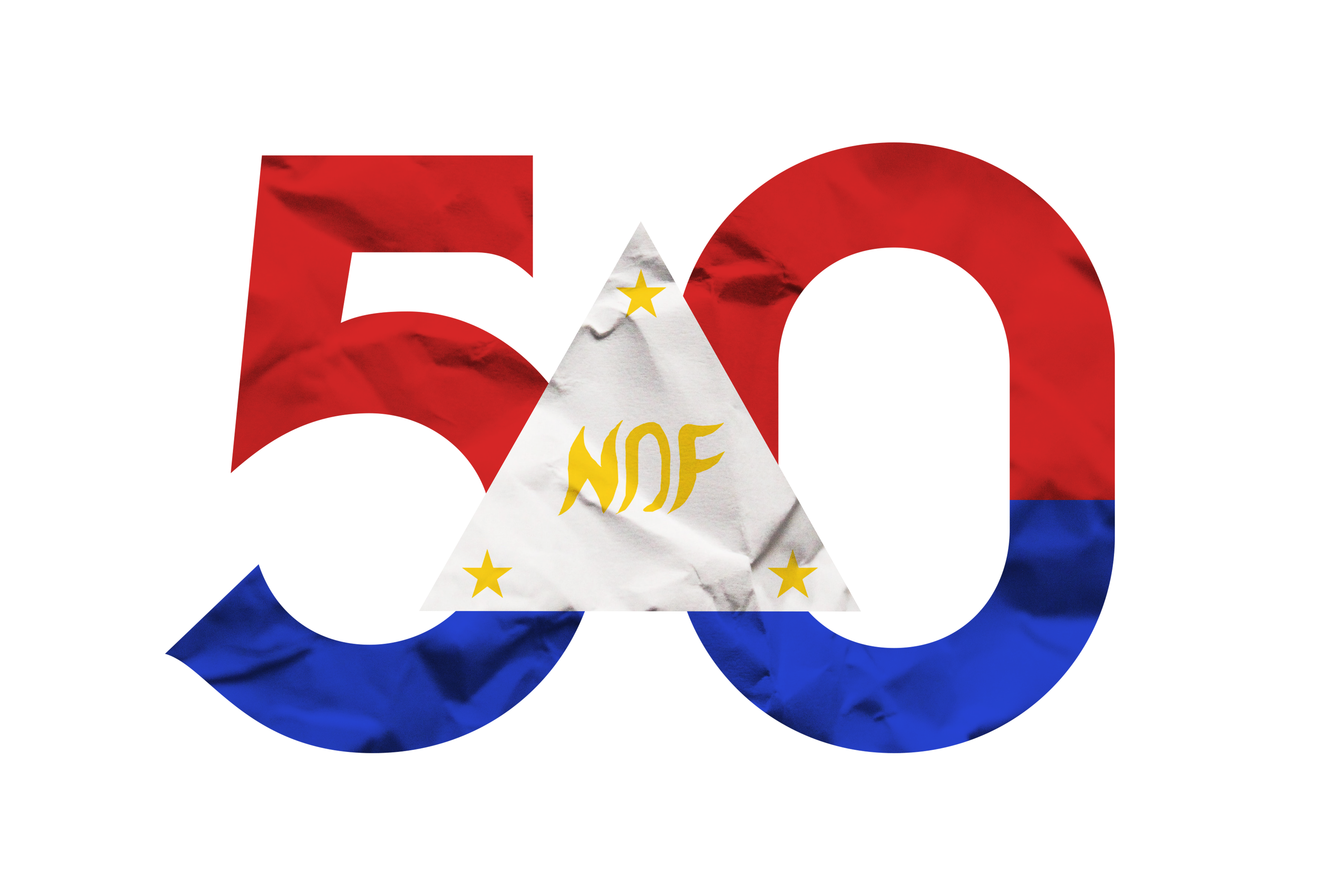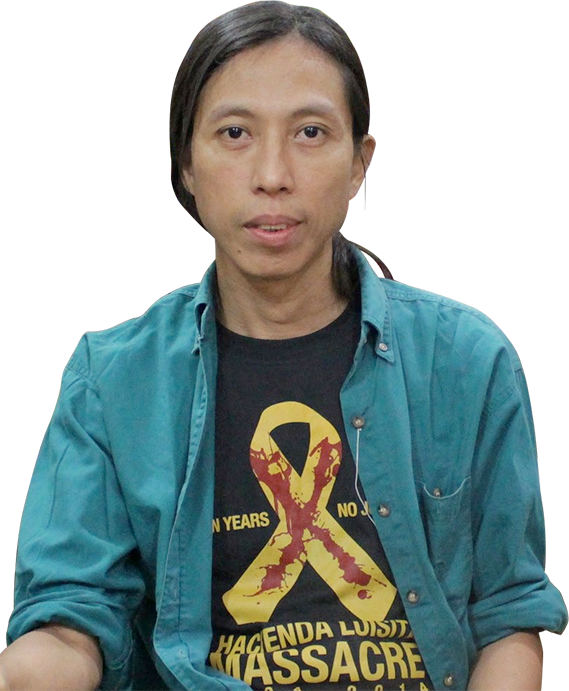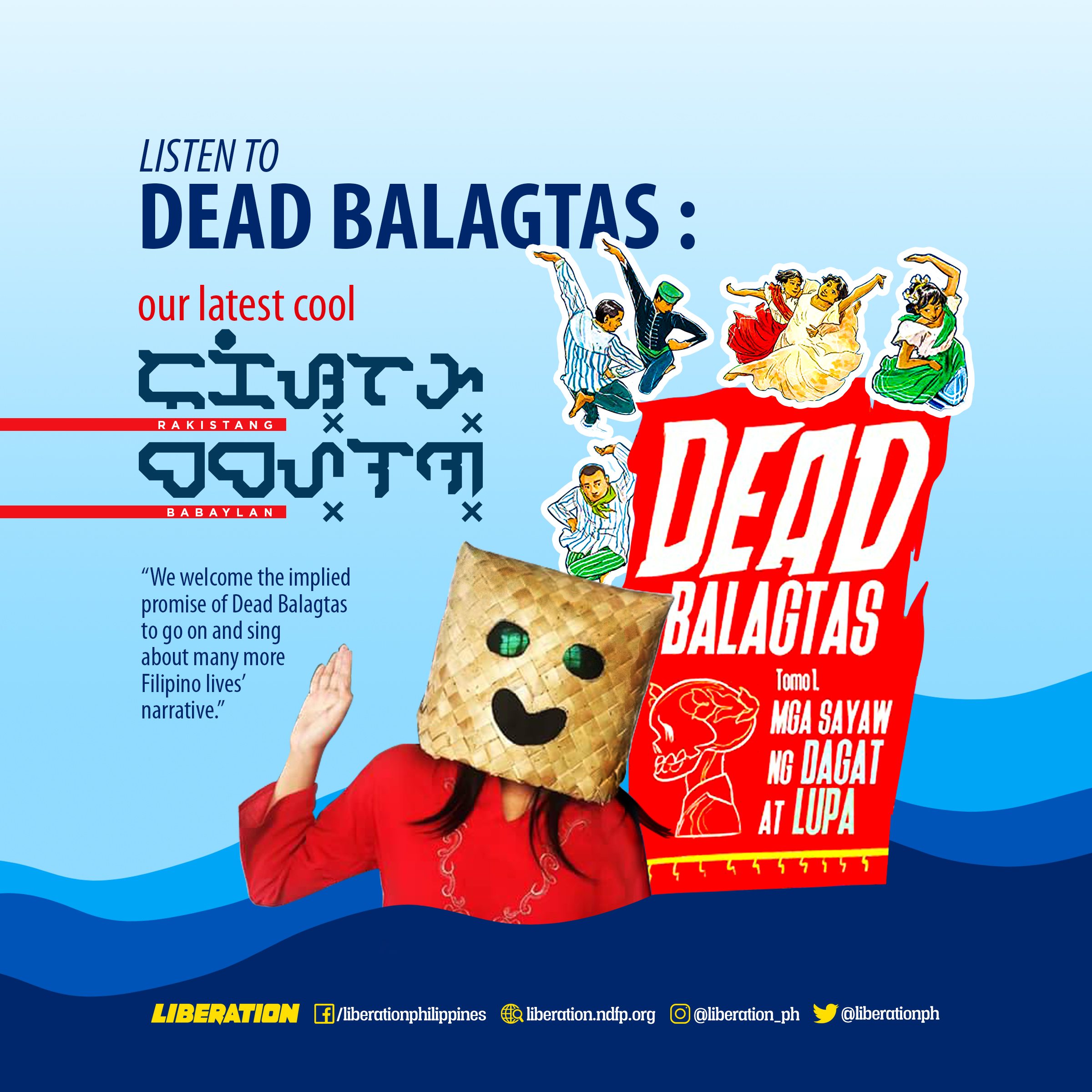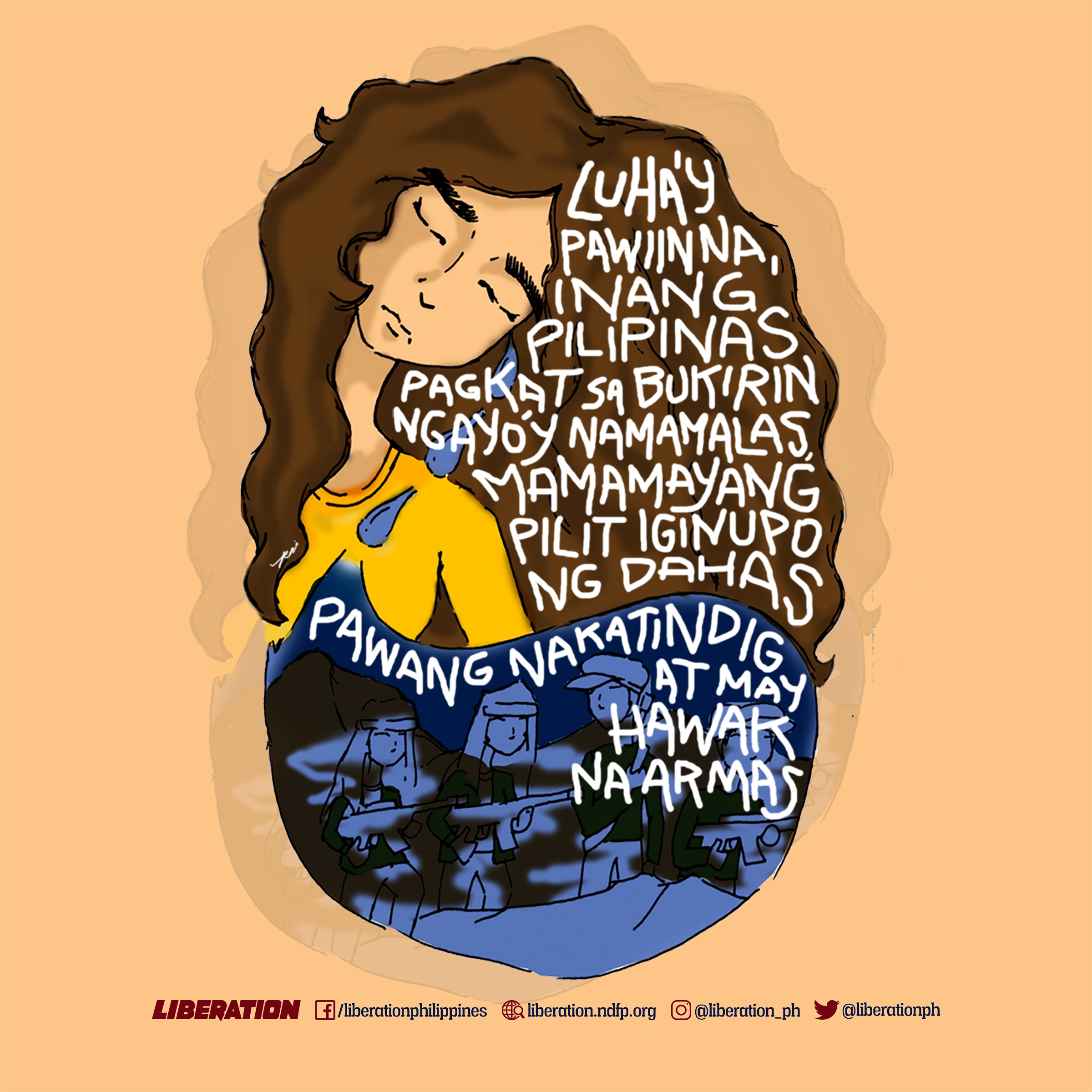Viva Singkwenta

VIVA SINGKWENTA
Orihinal na awit mula sa ARMAS
I.
Hakbang-hakbang sa paglakbay
ang masa’t pag-aaral dakilang gabay
sama-samang lagpasan mga hamon
padayon sa rebolusyon!
II.
Libu-libo man mga kaaway
Huwag matakot lumaban hanggang tagumpay
Laksa-laksang tumitindig
magwawagi, di padadaig!
Refrain:
Ilang dekada mang dumating
liwanag mo’y magniningning
sa puso ng masa nagliliyab
apoy ng digma!
Koro:
VIVA NDFP! sa buong kapuluan
VIVA NDFP! ginintuang kasaysayan
VIVA NDFP! sa tagumpay ng digmang bayan
Viva, mapagpalaya!
Viva, Singkwenta!
III.
Halina’t magbigay-pugay
Bandila ng CPP, i-wagayway (viva!)
RCTU,PKM,NPA
KM, KAGUMA, MAKIBAKA (viva!)
IV.
CNL, ROL, MASAPA
MRLO,MKP, KSM (viva!)
COMPATRIOTS, LAB, ARMAS
CPDF, LUMABAN! (viva!)
Repeat Refrain
Repeat Chorus
Mga martir at bayani ng bayan
Viva! Sambayang lumalaban
Viva! Pambansang demokrasya
Viva! paglaya ng bayan
Viva! Demokratikong Rebolusyon ng bayan
Viva! Hanggang sa Tagumpay
Viva! NDFP
Viva! Singkwenta
Viva!




